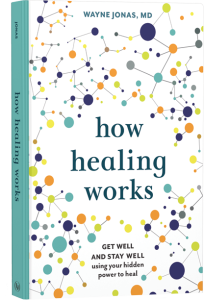Dieting and exercise are usually towards the top of most people’s list of New Year resolutions. Yet, “I’m going to eat healthier this year” is one of those well-intentioned, but too hard-to-define goals that are usually easier said than done.
The most important part of making New Year’s resolutions is sticking to them. This especially applies to your diet. Fulfilling your nutritional goals doesn’t require a drastic change. It involves making simple changes to your everyday life that will make you feel and function better. To help, I’ve outlined basic nutritional principles that will help you fulfill your goals as well as the foods you should eat more and the food you should consume less.
Understanding Basic Nutritional Principles
- Eat breakfast. Don’t eat dinner too late – don’t eat for a period of 10-12 hours, if possible.
- Consume fewer calories and sugar – if you need to gain weight, add calories but not sugar.
- Lower soda and refined carbohydrates – use whole grains when possible.
- Drink more water of various types – juices should be diluted by half.
This pattern of food consumption helps to reduce inflammation, improve health and wellbeing and may prevent several chronic diseases.
Foods to Eat More Of:
Proteins and Fat Sources:
- Cold water fish such as salmon, sardines, herring, or mackerel
- Fish oil, olive oil, coconut oil, grapeseed oil, flax oil
- Nuts and seeds: pumpkin seeds, ground flax seeds, almonds, walnuts, etc.
Food with Low Glycemic Load
- Whole grains: barley, bulgur, brown rice, quinoa, oats (steel cut or rolled)
- Legumes: beans, chickpeas, lentils
- Whole wheat tortillas, pumpernickel bread, 100% whole grain bread
Vegetables and Fruits Hight in Antioxidants
- Make a rainbow on your plate
- Yellow, orange and red vegetables
- Dark leafy greens
- Cruciferous vegetables: Broccoli, Brussels’ sprouts, cauliflower, cabbage
- Onions and garlic
- Berries and pomegranates
- Citrus fruits (not juices)
Healthy Spices, Herbs, Sweets, and Others
- Herbs and Spices with anti-inflammatory properties
- Cinnamon: ½ tsp. daily for blood glucose control
- Ginger: 1 gram per day, fresh or dried
- Turmeric: 1-3 grams per day of powder
- Garlic: 1-2 grams per day, fresh, or aged and deodorized
- Black, green and white teas
- Others: rosemary, cayenne, pepper
- Dark Chocolate: 1-2 ounces daily of 70% cocoa content or greater
- Probiotics
- Fermented foods: kombucha, miso, sauerkraut, yogurt, kefir, and kimchi
- Some high fiber foods
- Split Peas. Fiber: 16.3 grams per cup, cooked
- Lentils. Fiber: 15.6 grams per cup, cooked
- Black Beans. Fiber: 15 grams per cup, cooked
- Lima Beans. Fiber: 13.2 grams per cup, cooked
- Artichokes. Fiber: 10.3 grams per medium vegetable, cooked
- Peas
- Broccoli
- Brussels sprouts
Foods to Eat Less Of:
Proteins and Fat Sources
- Red Meat
- Dairy products (made with cow’s milk)
- Partially hydrogenated oils such as margarine or shortening
- Soybean, corn, safflower and sunflower oils
- Processed and fried foods
Foods with a High Glycemic Load
- White bread
- Instant rice and instant oatmeal
- Rice and corn cereals
- High fructose corn syrup
- Soda and sugary beverages
- Fruit juices
- Sweets: cookies, cake, pastries, donuts
Food Known to Trigger Intolerance Reactions
- Wheat
- Dairy (especially from cows)
- Eggs
- Corn
- Artificial colors and flavors
- Sucralose and aspartame
Learn more in my guide, Healthy Food, Healthy Mind, Healthy Lifestyle. Healthy You.
 Take Your Health Into Your Own Hands
Take Your Health Into Your Own Hands
Drawing on 40 years of research and patient care, Dr. Wayne Jonas explains how 80 percent of healing occurs organically and how to activate the healing process.

